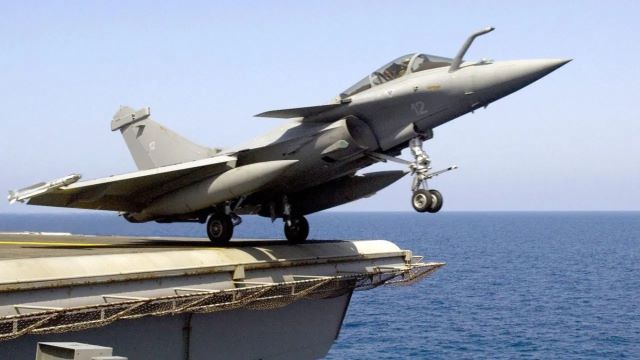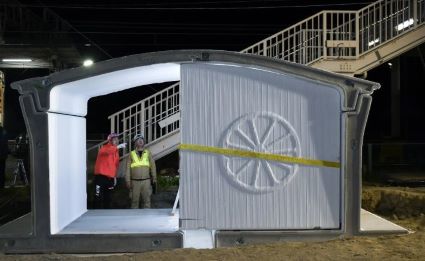PDF Download: Click here
1. Which species of wolf, extinct for 13,000 years, have American scientists revived?
a. Grey Wolf
b. Dire Wolf
c. Red Wolf
d. Himalayan Wolf
Answer: b. Dire Wolf

– Which American biotech company made this historic achievement? Colossal Biosciences
– This company used ancient DNA, cloning, and gene-editing techniques to bring to life three pups of the dire wolf species, which went extinct around 13,000 years ago. Among these three, two are males and one is female.
– According to the company, Colossal has kept the wolves at a private 2,000-acre campus at an undisclosed location in North America, where they are being well cared for.
– The two male pups are named Romulus and Remus.
– Both males were born in October 2024 from surrogate female dogs. The female pup is named Khaleesi and was born in January 2025.
– She is named after a character from Game of Thrones.
– According to Colossal Biosciences, these three young wolves will be kept for display purposes only. They will not be allowed to reproduce.
What is the process of bringing the Dire Wolf back to life?
– A scientific company named Colossal Biosciences has revived an extinct wolf-like species called the Dire Wolf using 72,000-year-old DNA.
– Scientists discovered a 13,000-year-old tooth from Sheridan Cave in Ohio and a 72,000-year-old skull from Idaho. Using these, they extracted the DNA and reconstructed the complete genome of the dire wolf.
– Then, they compared the dire wolf’s genome with that of modern animals like gray wolves, foxes, and jackals. This helped identify unique features of the dire wolf—such as its white fur and long, thick coat.
– Using CRISPR gene-editing technology, scientists made 20 genetic changes to the cells of a gray wolf to match the dire wolf’s DNA.
– These genetically modified cells were then used to create embryos, which were implanted into the wombs of hound breed dogs (surrogate mothers).
What are Dire Wolves (The “Terrifying Wolves”)?
– The Dire Wolf (Aenocyon dirus) was a large, predatory species of wild dog or wolf that lived around 13,000 years ago in southern Canada and the United States.
– They were similar to today’s gray wolves (Canis lupus) but were larger and had white fur.
– A typical dire wolf could stand about 3.5 feet tall, grow over 6 feet in length, and weigh up to 68 kg (150 lbs).
– They hunted large prey like horses, bison, and possibly even mammoths. When many of these prey species went extinct—possibly due to human hunting—the dire wolves also slowly disappeared and went extinct.
When Did This Species Become Popular?
– The dire wolf gained modern popularity in recent years because of its mention in HBO’s famous series Game of Thrones and George R.R. Martin’s fantasy novel series A Song of Ice and Fire, on which the show is based.
Note:
– Gray Wolf are still alive today.
– Dire Wolf went extinct about 13,000 years ago.
Source: India Express
————–
2. Which neighboring country did India withdraw the ‘trans-shipment facility’ from? India took this step after the head of that country made anti-India remarks in China.
a. Sri Lanka
b. Bangladesh
c. Bhutan
d. Pakistan
Answer: b. Bangladesh
India Withdraws Transshipment Facility Given to Bangladesh
– India has withdrawn the cargo transshipment facility that was being provided to Bangladesh.
– The Central Board of Indirect Taxes and Customs (CBIC) issued a circular on April 8, officially announcing this decision.
– Since 2020, under this arrangement, Bangladesh was allowed to send its export cargo to third countries through Indian customs stations, ports, and airports.
Main Reason Behind the Move
– The decision comes after Bangladesh’s interim Prime Minister Mohammad Yunus recently made remarks during his visit to China, referring to India’s North Eastern states as landlocked (surrounded by land and without direct access to the sea).
Yunus reportedly said:
– “Bangladesh is the guardian of the Bay of Bengal. The Seven Sisters (India’s North-Eastern states) are landlocked. They have no access to the sea. Bangladesh is the sole maritime gateway for that region, which opens up major investment opportunities.”
– This statement led to diplomatic tension between India and Bangladesh.
Why Did India Provide This Facility to Bangladesh?
– As part of its Act East Policy, India aimed to improve connectivity to its North-Eastern states.
– To promote mutual cooperation between India and Bangladesh.
– To counterbalance China’s growing influence in the region.
– Being the largest and most strategically powerful country in South Asia, India has long operated under its “Neighborhood First” policy, working cooperatively with neighboring countries.
– The decision taken in April 2025 to withdraw this facility was not merely administrative, but also a strategic and geopolitical message—particularly after Bangladesh’s Chief Advisor Mohammad Yunus, during his visit to China, made certain controversial remarks.
How Was Bangladesh Benefiting From This Facility?
1. Delhi Airport:
– Bangladesh used Delhi Airport because of its status as a logistics hub, offering better connectivity and advanced processing infrastructure.
– It helped fulfill international export demands, especially since direct flights from Bangladesh are limited or often lack sufficient capacity.
– Now that India has withdrawn the facility, Bangladesh may need to rethink its logistics strategy and seek new regional partners.
2. Multi-Modal Transport Routes:
– Sometimes, shipments followed a route like Chattogram Port → Kolkata Port → Delhi Airport, combining sea, rail, and air transport.
3. Kolkata Airport:
– Frequently used to send shipments to various countries.
4. Indian Seaports:
– Key ports like Kolkata Port and Haldia Port were used for transshipment of cargo.
5. Transit Routes Through India:
– Common transit path: West Bengal → Assam → Tripura → Northeastern Bangladesh.
Major Benefits for Bangladesh:
– 30–40% reduction in transportation costs
– Time savings in shipping and logistics
– Seamless connectivity between domestic regions and international markets
– This model was especially applicable when goods had to be sent from Bangladesh for time-bound delivery.
Why did India stop the facilities?
– India wants to show that if its interests are ignored, it can withdraw the special benefits it has granted.
– This is a clear diplomatic message – “Relationships will function on the basis of equality.”
– Recently, Bangladesh has greenlit some major defense deals and infrastructure projects with China.
– India views this as a security threat, especially concerning its northeastern region.
– India had extended this special facility to Bangladesh, but in return, India did not receive direct road or rail access from Tezpur to Tripura or Mizoram.
– Bangladesh has, on several occasions, caused delays or obstructions to Indian trucks or containers.
Impact on Bangladesh
– Bangladesh will have to rely on direct air connectivity for its goods, which has limited capacity.
– It will have to depend more on hubs like Dubai and Singapore, which could increase logistics costs.
– This could be a major blow to its garment export industry and pharmaceutical companies.
Will Bhutan and Nepal be affected too?
– The Ministry of External Affairs has stated that Bhutan and Nepal will not be affected by this.
—————-
3. Name the first Indian batsman to cross the 13,000-run mark in T20 cricket?
a. Virat Kohli
b. M. S. Dhoni
c. Ravindra Jadeja
d. Rohit Sharma
Answer: a. Virat Kohli
– He achieved this milestone during the IPL in April 2025.
– He became the fifth player to reach this feat after Virat Kohli, Chris Gayle, Alex Hales, Shoaib Malik, and Kieron Pollard.
– Virat Kohli completed 13,000 runs in his 386th T20 innings.
Players with the Most Runs in T20s:
– Chris Gayle (West Indies) – 14,562
– Alex Hales (England) – 13,610
– Shoaib Malik (Pakistan) – 13,557
– Kieron Pollard (West Indies) – 13,537
– Virat Kohli (India) – 13,000*
————–
4. Name the first Kannada author to be nominated for the International Booker Prize 2025?
a. Banu mushtaq
b. Solved Ballet
c. Vincent Delacroix
d. Hiromi kawakami
Answer: a. Banu Mushtaq

– This means that the book is among the six novels nominated for this year’s International Booker Prize.
– In other words, the prize will be awarded to one of these six.
Banu Mushtaq
– Karnataka-based writer, activist, and lawyer Banu Mushtaq was shortlisted on April 8, 2025.
– She was shortlisted for her short story collection Heart Lamp.
– Heart Lamp was originally written in Kannada and translated into English by Deepa Bhasthi.
– This is the first time a Kannada author has been shortlisted for this prestigious award.
– It is the second time that a female Indian author has made it to the shortlist.
– Earlier, in 2022, Geetanjali Shree’s Tomb of Sand had won the prize.
About the book Heart Lamp
– Heart Lamp is a collection of 12 short stories written by Banu Mushtaq between 1990 and 2023.
– Earlier, Banu’s short story collection Hasina aur Anya Kahaniyan (Hasina and Other Stories) won the English PEN Translation Award for 2024.
– That collection was also translated into English by Deepa Bhasthi.
– Published in India by Penguin Random House India and in the UK by And Other Stories in April 2025, Heart Lamp is the only short story collection among the five other novels.
– Heart Lamp tells stories of the encroachment of modernity through the lives of Muslim women in South India.
Shortlisted Books
– A Leopard-Skin Hat – Annie Ernaux (Author)
– Perfection – Vincenzo Latronico (Author)
– Small Boat – Vincent Delecroix (Author)
– Hirami Kawasaki – Asa Yoneda (Author)
– On the Calculation of Volume – Solvej Balle (Author)
International Booker Prize
– The International Booker Prize carries a total prize of £50,000.
– This is split equally between author and translator, with each shortlisted pair also receiving £2,500.
– The winner will be announced at a ceremony at the Tate Modern in London on 20 May 2025.
Source: The Hindu
—————
5. The chief administrator and spiritual leader of which organization, Dadi Ratanmohini, passed away at the age of 101 on April 8, 2025?
a. Brahma Kumari
b. JNU
c. VHP
d. None of these
Answer: a. Brahma Kumari

– Full name at birth: Laxmi
– Born: March 25, 1925, Hyderabad, Sindh (pre-partition India, now in Pakistan)
– Died: April 8, 2025, at age 100, in Ahmedabad, Gujarat
– Position: Chief Administrator of Brahma Kumaris (2021 to death)
Source: The Hindu
—————-
6. How many marine Rafale fighter jets has the central government approved for purchase from France for ₹63,000 crore?
a. 20 Marine Rafale fighter jets
b. 23 Marine Rafale fighter jets
c. 26 Marine Rafale fighter jets
d. 16 Marine Rafale fighter jets
Answer: c. 26 Marine Rafale fighter jets

– The Cabinet Committee on Security (CCS) chaired by PM Narendra Modi approved the deal on April 9, 2025.
– India is set to receive 26 marine fighters worth ₹64,000 crore.
– Under this deal, France will provide the Indian Navy with 22 single-seater and 4 twin-seater jets.
These aircraft will be deployed on INS Vikrant.
– India wanted to finalize the Rafale Marine deal for the Navy at the same base price that was set in 2016 when 36 aircraft were bought for the Air Force.
– After that, the Ministry of Defence issued a Letter of Request, which France accepted in December 2023.
– Previously, in September 2016, India had purchased 36 Rafale fighter jets from France for the Air Force in a deal worth ₹59,000 crore.
First round of discussions took place in June 2024
– The first round of discussions on the deal to purchase 26 Rafale-M fighter jets began in June 2024.
– Once the deal is finalized, France will provide Rafale-M jets along with weapons, simulators, training for crews, and logistical support.
– The weapons include Astra air-to-air missiles, Indian-specific enhanced landing equipment for operating from aircraft carriers, and other necessary equipment.
– France has demonstrated the landing and takeoff skills of the Rafale jet from Indian aircraft carriers during trials, but additional equipment will be required for real-time operations.
Deployment in the Indian Ocean
– The 22 single-seat Rafale-M jets and 4 double-trainer seat Rafale-M jets will be deployed on INS Vikrant to counter China in the Indian Ocean.
– The Indian Navy will base these aircraft at INS Dega in Visakhapatnam, Andhra Pradesh.
– These twin-engine jets are generally more expensive than aircraft used by air forces worldwide.
– They will also include landing gears used for arresting landings.
Features of the Rafale Marine Fighter Jet
– The Rafale Marine is more advanced than the Rafale fighter jets currently in India.
– It can land in very small spaces.
– This is known as “short takeoff but arrested landing.”
– 85% of the components in both variants of the Rafale are the same, meaning there will never be a shortage or problem with spare parts.
– It is 15.27 meters long, 10.80 meters wide, and 5.34 meters high.
– Its weight is 10,600 kg, and it can reach a speed of 1,912 km/h.
– It has a range of 3,700 km and can fly up to an altitude of 50,000 feet.
– It is considered the best for anti-ship strikes.
– It is also designed for attacking nuclear plants.
First batch may take 2-3 years
– The trials of INS Vikrant have already begun, and fighter operations from its deck are yet to be tested.
– Experts say that the Rafale is ideal for the Navy because the Air Force has already developed infrastructure related to Rafale maintenance, which will be useful for the Navy as well, saving a lot of money.
– The first batch of Rafale-M jets may take 2-3 years to arrive.
– The deal for 36 Rafale jets for the Air Force was concluded in 2016, and it took 7 years for the delivery to be completed.
Why the need for Rafale-M?
– INS Vikrant’s Aviation Facility Complex (AFC) was designed for MiG-29 fighter planes.
– MiGs are Russian-made fighter jets that have been in the news recently due to several crashes. Hence, the Indian Navy plans to completely phase out MiG aircraft from its fleet in the coming years.
– The issues with MiGs have led the Navy to realize the need for either Rafale-M or F-18 Super Hornet fighter jets instead.
– In 2022, the Navy mentioned that although INS Vikrant was designed for MiG-29s, it was looking for a better deck-based fighter plane to replace them.
– Negotiations were ongoing for the purchase of either the French Rafale-M or the American Boeing F-18 ‘Super Hornet’ fighter planes.
– But now, the Navy has agreed to purchase the French Rafale-M.
– The Navy first tested both the French Rafale-M and American F-18 Super Hornet jets in Goa.
– After testing, the Ministry of Defence concluded that the Rafale-M was the better option.
HAL also preparing aircraft
– In the coming years, the Navy plans to deploy the naval version of the Tejas Light Combat Aircraft (LCA) on INS Vikrant.
– Tejas is a twin-engine deck-based fighter jet being developed in India.
– However, the Tejas, developed by DRDO, will take another 5-6 years to be ready.
– It is expected to be available for the Navy between 2030 and 2032.
– China is now testing its third aircraft carrier, Fujian, which weighs more than 80,000 tons.
– Prior to this, China had already inducted the Liaoning (60,000 tons) and Shandong (66,000 tons) into its Navy.
Source: The Hindu
—————
7. When is World Parkinson’s Day observed?
a. 11 April
b. 12 April
c. 13 April
d. 14 April
Answer: a. 11 April
– Parkinson’s disease is caused by a condition in the part of the brain that helps coordinate movement. It is a movement-related disorder. In this condition, the nerves that carry signals from the brain to the hands or legs become unable to function. As a result, a person loses significant control over their hands.
– During Parkinson’s disease, people typically become forgetful.
– This day symbolizes the birthday of Dr. James Parkinson from London, who was the first person to systematically describe the symptoms of Parkinson’s disease in six individuals.
– Additionally, the month of April is observed as Parkinson’s Awareness Month.
—————
8. When is National Safe Motherhood Day celebrated?
a. 11 April
b. 12 April
c. 13 April
d. 14 April
Answer: a. 11 April
– This day also marks the birth anniversary of Kasturba Gandhi, the wife of the Father of the Nation, Mohandas Karamchand Gandhi.
– In 2003, on the initiative of the White Ribbon Alliance, the Government of India declared April 11, 2022, as National Safe Motherhood Day.
—————
9. Terror attack accused Tahawwur Hussain Rana was brought to Delhi in April 2025 after being extradited from the USA. He is accused in which terrorist attacks?
a. Pathankot attack, 2016
b. 26/11 terror attack, 2008
c. Pulwama attack, 2019
d. Uttar Pradesh bomb blasts, 2007
Answer: b. 26/11 terror attack, 2008
– The accused, Rana, arrived in Delhi from the United States on April 10, 2025.
– A team from the National Investigation Agency (NIA) and intelligence officials has taken him into 18 days of custody.
– During these 18 days, detailed interrogations will be conducted to uncover the full conspiracy behind the 26/11 terrorist attacks (2008).
– Bringing the accused to India marks the completion of a lengthy legal process.
Government Lawyer for Tahawwur Hussain Rana
– The Ministry of Home Affairs has appointed government lawyer Narendra Man for a three-year term in the case involving Tahawwur Hussain Rana, accused of the Mumbai 26/11 attacks.
Where are the other accused?
– According to The Indian Express, the National Investigation Agency (NIA) will prosecute them in a terrorism case.
– Other key individuals involved in the 26/11 attacks, such as Lashkar-e-Taiba (terrorist organization) founder Hafiz Saeed, Major Iqbal linked to the ISI, and Sajid Majid alias Sajid Mir, who trained the terrorists, are still in Pakistan.
When was he arrested?
– Tahawwur Hussain Rana was arrested in 2009 from Chicago, USA. This arrest took place a year after the 26/11 terrorist attacks, in which approximately 166 people were killed.
– However, prior to this, the Federal Bureau of Investigation (FBI) in the USA had already interrogated Tahawwur Hussain Rana.
What charges does Tahawwur Hussain Rana face?
– In addition to criminal conspiracy, Rana has been charged under the Unlawful Activities (Prevention) Act, 1967 (UAPA) sections 16 (committing terrorist acts), 18 (attempting to commit terrorist acts or advocating for them), and 20 (membership in a terrorist group), as well as under the Indian Penal Code, 1860 (IPC) sections 121 (waging war against the government), 121A (conspiracy to commit offenses under section 121), 302 (murder), 468 (forgery), and 471 (using forged documents).
– A supplementary charge sheet is expected to be filed, with updates to the charges under the Indian Justice Code, 2023 (BNSS). Many of these charges carry the provision of the death penalty.
Role of Tahawwur Hussain Rana
– Documents presented by the FBI in U.S. courts describe Rana (who is now 64 years old) as of Pakistani origin and a Canadian citizen who ran an immigration firm in Chicago.
What is 26/11 and why is it in the spotlight?
– The 2008 Mumbai attack, also known as the 26/11 attack, was a major terrorist attack that took place in November 2008.
– Ten terrorists from the Pakistani terrorist organization Lashkar-e-Taiba carried out shootings and bombings in Mumbai for four days.
– The attack lasted from November 26 to November 29. Approximately 166 people were killed, and over 300 were injured. The attack was widely condemned around the world.
Note: Brave Mumbai police officers such as Hemant Karkare, Vijay Salaskar, and Ashok Kamte were martyred during this attack.
Source: Indian Express | The Hindu
—————
10. किस देश ने राष्ट्रपति द्रौपदी मुर्मू को डॉक्टरेट की मानद उपाधि प्रदान की?
Which country conferred honorary doctorate degree to President Droupadi Murmu?
a. France
b. Spain
c. Portugal
d. Slovakia
Answer: d. Slovakia
– Constantine the Philosopher University, Slovakia, awarded an honorary doctorate to President Murmu on April 10, 2025.
– According to the university, this honor is being bestowed upon President Murmu for her remarkable contributions in the fields of government service, social justice, and inclusivity.
– President Droupadi Murmu was on a four-day visit to Slovakia and Portugal in April.
Slovakia is a landlocked country in Central Europe.
– President: Peter Pellegrini
– Prime Minister: Robert Fico
– Capital: Bratislava
– Currency: Euro
– Borders: Poland, Ukraine, Hungary, Austria, and the Czech Republic
Source: deccanherald
————-
11. दुनिया का पहला 3D प्रिंटेड रेलवे स्टेशन किस देश ने बनाया?
Which country built the world’s first 3D printed railway station?
a. India
b. Japan
c. America
d. China
Answer: b. Japan

– The name of this new station is Hatsuushima, which is located in the city of Arida, Japan.
– The components of this station were 3D printed elsewhere and assembled on-site at Hatsuushima in March 2025, making it the world’s first 3D printed railway station.
– According to The Indian Express, this information was received on April 9, 2025.
Built in Six Hours: The Railway Station
– Hatsuushima Station in the city of Arida, Japan, serves 530 passengers daily. The station has a single line, with trains running three times an hour.
– The new Hatsuushima station was built in place of an old wooden structure built in 1948.
– A Japanese company called Serendix transformed it into a 3D printed railway station in just six hours.
How Was the New Station Built?
– The construction of this new 3D printed railway station was entrusted to Serendix, a Japanese company.
– The company reported that it took seven days to 3D print the railway components and reinforce them with concrete.
– The printing was done at a factory in Kumamoto, located on the Kyushu island of Japan. The parts were then loaded onto trucks on the morning of March 24 and transported to Hatsuushima station, about 804 km away.
– The company mentioned that typically such construction work takes several months and incurs high costs. This work is usually done at night when the trains are not running.
– It is noteworthy that the work began at 11:57 PM on March 31, when the last train left, and the old station was transformed into the 3D printed railway station in less than six hours.
– The new station covers an area of approximately 100 square feet.
– However, the interior work, such as installing ticket machines and travel card readers, is still pending. West Japan Railway Company announced that the new station building will be opened to passengers in July.
Japan:
– Capital – Tokyo
– Emperor – Naruhito
– Prime Minister – Shigeru Ishiba
– Currency – Japanese Yen
– Population – 230 million
Source: nytimes | Hindustan Times | Indian Express





